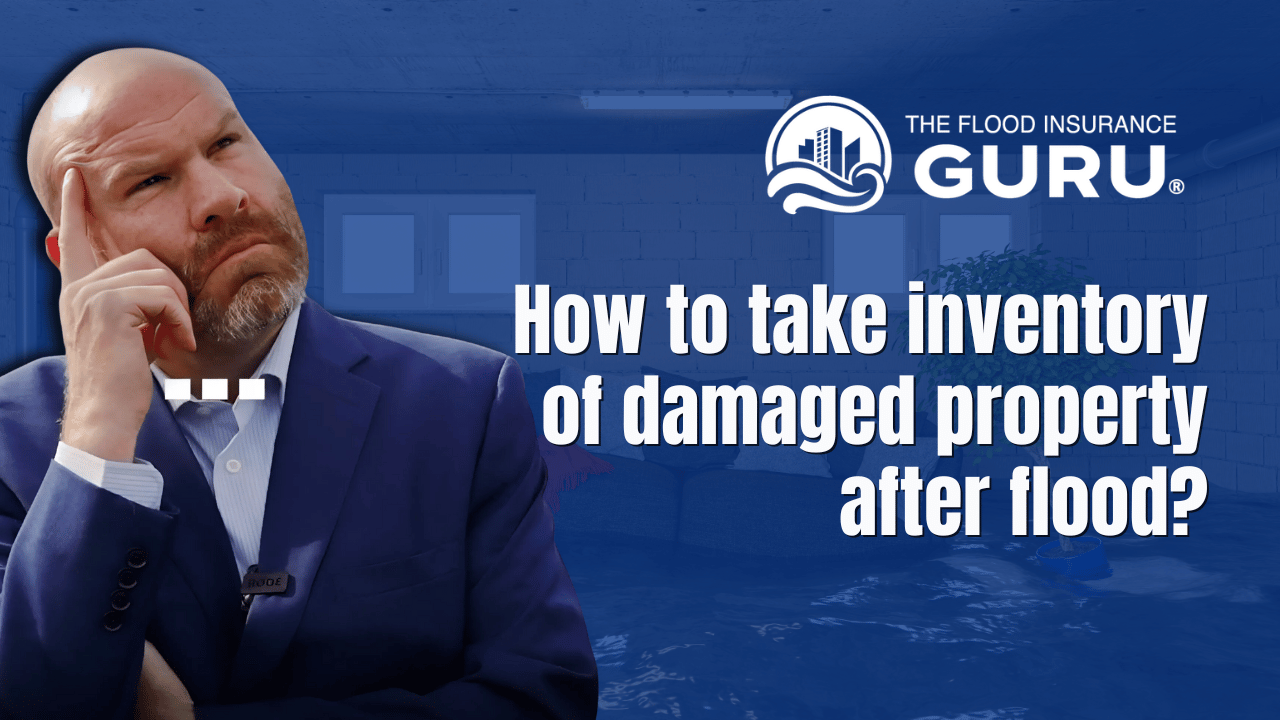Real Estate Investor’s Guide to Flood Damage, Inventory, and Claims
August 22nd, 2025
3 min read
By Chris Greene

Worried your flooded rental property might cost more than it should?
Unsure how to document damage correctly to avoid insurance headaches?
If you’re staring at soaked drywall and panicked tenants, you’re not alone—and one misstep can derail your recovery. Whether you're dealing with a single rental or an entire portfolio, failing to document flood damage properly can delay your claim, inflate repair costs, and sabotage your ROI.
This step-by-step guide gives you everything you need to confidently document, claim, and recover.
With over a decade of boots-on-the-ground experience in flood response and insurance claims, we’ve distilled our best practices into a five-phase process. You’ll learn how to:
-
Secure your property and stay compliant with safety laws
-
Capture the photos, videos, and item logs adjusters need
-
Avoid the most common—and costly—claim errors
-
Understand the nuances of your flood policy
-
Work effectively with adjusters and pros
Let’s walk through how to go from flooded and frazzled to filed and funded.
Immediate Safety & Legal Must-Do’s
Before you take a single photo, protect yourself legally and physically.
-
Shut off utilities: Hire licensed pros to disconnect power, gas, and water to prevent accidents and coverage disputes.
-
Check structural integrity: If there’s sagging or cracking, do not enter. Bring in a structural engineer first.
-
Notify tenants: Required in many states. Always document what you send.
-
Assess substantial damage: If repairs exceed 50% of market value, rebuilding to floodplain code may be required.
-
Mitigate mold risk: Mold starts in under 48 hours. Assume floodwater is contaminated and call professionals.
Phase 1: Exterior Assessment
Start with the outside—it’s your foundation for proof.
-
Take wide-to-close photos: Capture the entire structure and zoom in on water lines and structural damage.
-
Mark high-water lines: Use tape and include measurements in your photos.
-
Check the foundation & grading: Look for cracks or erosion.
-
Inspect doors/windows: Look for swelling or compromised locks.
-
Document mechanical systems: Photograph HVAC units, meters, and gas lines in relation to water exposure.
-
Note external damage: Fences, landscaping, driveways, and more.
Phase 2: Interior Structural Assessment
Room-by-room clarity is essential.
-
Use a floor plan: Mark damage in each room to keep organized.
-
Walls & framing: Use a moisture meter. Note soft spots or bulging drywall.
-
Flooring: Record type and damage—tile vs. laminate matters.
-
Ceilings/roofs: Identify leaks or sagging.
-
Doors/windows: Test function and flag failure points.
Phase 3: Building Systems Documentation
This is what adjusters look for first. Don’t skip it.
-
Electrical: (Only with power off) Capture panels, switches, and outlets.
-
HVAC: Show submerged units and ductwork.
-
Plumbing: Document water heaters and any visible backups.
-
Appliances: Record make, model, and condition.
Phase 4: Contents & Personal Property
Make a clean inventory of every item—accuracy matters.
-
Separate items: Landlord vs. tenant property.
-
Itemize: Brand, model, age, purchase date.
-
Photograph: From three angles, including damage close-ups.
-
Use a spreadsheet: Include name, location, value, and notes.
Phase 5: Visual Documentation Standards
Photos alone won’t cut it—standards matter.
-
Three-tier approach: Wide, medium, close-up shots with measuring tools in frame.
-
Narrated video walkthroughs: Explain damage out loud, room by room.
-
File organization: Use naming conventions like
PropertyID_Date_Room_DamageType.jpg. -
Time-stamping: Ensure metadata is embedded.
Advanced Flood Claim Strategies
Avoid These Expensive Mistakes
-
Wrong structure: Label buildings clearly for adjusters.
-
Poor documentation: Incomplete records delay or reduce payouts.
-
Mortgage check delays: Stay in close touch with your lender.
Understand Direct vs. Indirect Damage
NFIP only covers damage directly from floodwater. Damage from sewer backups or erosion may be denied unless clearly linked to surface flooding.
Track Hidden Damage & Supplemental Claims
Drywall may seem fine now but reveal mold or rot later. Keep documenting and file supplemental claims as needed.
Know How to Dispute Low Estimates
Bring receipts, inspection notes, and photos. Request a reinspection and escalate before bringing in a public adjuster.
Policy & Regulatory Nuances
Know your policy inside and out.
-
NFIP vs. Private: Private flood insurance may offer faster settlements.
-
Coverage limits: NFIP maxes out at $250k for buildings—often not enough.
-
Valuation: Is your policy based on ACV or RCV?
-
ICC funding: Covers up to $30k in code-mandated rebuild costs.
Preparing for the Adjuster Visit
-
Upload visuals and documentation to a shared cloud folder.
-
Summarize room-by-room damage with costs and photos.
-
Schedule a walkthrough—virtual or in-person.
Don’t Forget: Business Interruption & Additional Living Expenses
-
Rent loss: Share lease agreements and rent rolls.
-
Displacement: Track tenant relocation expenses.
-
Temporary fixes: Save all repair receipts.
Looking Ahead: Tech, Trends & What’s Next
-
AI assessments: More insurers use AI to validate claims.
-
Longer timelines: Storm surges increase claim volume and delays.
-
Risk Rating 2.0: Impacts premiums, not payouts.
Who’s on Your Team? Collaborating with Pros
-
Restoration contractors: Prioritize those with flood experience.
-
Engineers/mold pros: Spot what you can’t see.
-
Public adjusters: Use them when disputes get serious.
-
Communication tools: Shared drives, project boards, and message logs keep everyone aligned.
From Chaos to Control: Your Flood Recovery Roadmap
After the initial shock of water damage, it’s normal to feel overwhelmed—unsure what to photograph, which documents to gather, or how to make sure you’ll actually get paid.
Now, you’re equipped with a step-by-step system that turns confusion into clarity. You know how to capture the damage, avoid red tape, and recover your income faster.

